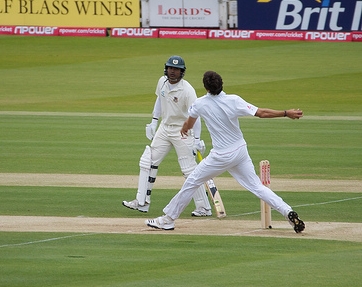Why you should care about your cricket team's culture
You don't have to be a professional side with team rules, mission statements and bonding sessions in the Brecon Beacons. Culture is simply the values you share with your team mates when you get together to play cricket.
But if you are playing Sunday afternoon cricket, does it even matter about what culture the team has?
It does if you are even vaguely interested in winning.
Adrian Shaw reveals the secrets of 20 years of first-class experience
 Former first-class cricketer Adrian Shaw is passing on the benefits of his experience to PitchVision Academy members.
Former first-class cricketer Adrian Shaw is passing on the benefits of his experience to PitchVision Academy members.
5 Ways to recover from a hard day's cricket
 How do you get over that next day (or few days) soreness that cricket gives you?
How do you get over that next day (or few days) soreness that cricket gives you?
I'm thinking about it especially today because, until now, my team have been good enough to bowl sides out well inside the allotted 50 overs. But this weekend it took the full overs to get the runs and my keeping legs have been feeling the strain.
It's not just annoying to walk around at work feeling stiff on a Monday either.
No cricket show this week
This week's PitchVision Academy Cricket Show has been cancelled.
Sadly the show had some technical difficulties meaning we could only record about 5 minutes of an introduction to the show but nothing more.
If you want your PitchVision Academy Cricket Show fix, the archive is still available for free from here.
It's a good chance to catch up on old shows where the cricket coaching advice is just as relevant now as it was then.
Cricket Basic 90 (Batting): Batting Risk and Return are Asymmetrical
90. Batting is first and foremost about survival - you can’t get runs from the pavilion. Batting risk and returns are asymmetrical. Remove your weaknesses before you practice your strengths.
- Login to post comments
- Feed: Feed for somebasicsofcricket
- Original article
Cricket Basic 89 (Batting): Get Hit in the Bat Not the Head
89. Use your bat as protection and to retrieve balls from adjacent occupied nets or wait until the batsmen in the net has finished playing the delivery they are facing and then ask them to please retrieve the ball.
- Login to post comments
- Feed: Feed for somebasicsofcricket
- Original article
What is a good length to bowl?
It doesn't matter if you bowl occasional leg spin or you open for a Premier League team; you want to bowl a good length.
Consist accuracy is one of the non-negotiable Laws of bowling success.
In the past coaches have always stuck to the mantra of 'putting the batsman in 2 minds'.
The hierarchy of playing spin
 How many good players of spin are there in club cricket?
How many good players of spin are there in club cricket?
Playing spin is difficult and takes practice, but good spinners are rare in the non-professional game and so batsmen don't get to face them much in the nets or in matches.
The result is batsman who can defend or slog, with not much in-between.
How to spin out a batsman set on defence
Picture the scene; you are playing in a English declaration game. The weather is set fair and after batting first you have enjoyed an excellent tea.
The opposition start well, but lose a flurry of quick wickets. With 6 over to go 22 runs are needed but numbers 10 and 11 are at the wicket.
So they shut up shop, batting out to save the draw.
The 5 immutable Laws of bowling success
 Some say bowling is a 'god given' skill. Those rare few with the talent for it are the only ones who can succeed.
Some say bowling is a 'god given' skill. Those rare few with the talent for it are the only ones who can succeed.
Bowling ability isn't bestowed by a higher power at birth. It's the result of 5 simple things, all within the reach of anyone wanting to be successful with the ball.

